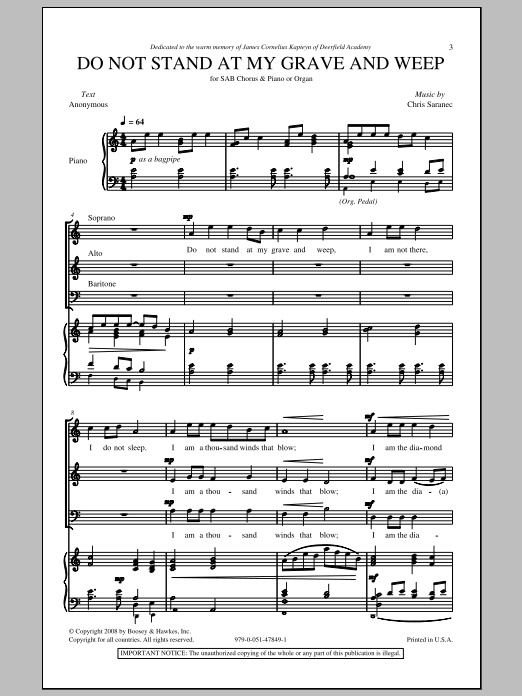

A number of people have contacted me with their recollections of having seen the poem on very old tombstones (perhaps even dated before 1932, notably and most specifically in Texarkana Texas and Provincetown, Massachusetts) but despite my best efforts to research this (from the UK) I have as yet been unable to substantiate these sightings. I am especially keen to know of any sightings (especially photographic evidence) of the poem on old gravestones/tombstones. However, many different variations of the poem can now be found, and many different claims of authorship have been made, and continue to be made. The best evidence and research ( summarised below) indicates that Mary Frye is the author of the earliest version, and that she wrote it in 1932. Debate surrounds the definitive and original wording of this remarkable verse, and for many the authorship is unresolved too. While generally now attributed to Mary Frye, the hugely popular bereavement poem 'Do not Stand at My Grave and Weep' (often shown as 'Don't Stand at My Grave and Weep) has uncertain history and origins. ~Adaption author Unknown, original poem by Mary Frye.Do not stand at my grave and weep Mary Frye's (attributed) famous inspirational poem, prayer, and bereavement verse Do not think of me as gone – I am with you still – in each new dawn.

I do not sleep.ĮACH NEW DAWN I give you this one thought to keep I am with you still – I do not sleep. Although the origin of the poem was disputed until later in her life, Mary Frye's authorship was confirmed in 1998 after research by Abigail Van Buren, a newspaper columnist. " Do Not Stand at My Grave and Weep" is a poem written in 1932 by Mary Elizabeth Frye. I am a thousand winds that blow.Ĭorrespondingly, do not stand at my grave and weep history? Do not stand at my grave and weep, I am not there, I do not sleep. Likewise, do not stand at my grave and weep reading? Do Not Stand at My Grave and Weep. She is asking her mourners not to stand at her grave and weep. The speaker is someone who has passed away and is leaving this message to her dear ones.

I am not there I do not sleep.” Mary Elizabeth Frye begins the poem with these two lines which define the meaning of the poem. Subsequently, one may also ask, what does the poem Do not stand at my grave and weep mean? We don' t cry because our loved one is dead, we cry because we won' t ever see or talk to them again and we will miss them. This is the only surviving poem of Mary Elizabeth Frye and quite possibly her only poem. She wrote it to comfort a family friend who had just lost her mother and was unable to even visit her grave.


 0 kommentar(er)
0 kommentar(er)
